BACK TO THE FUTURE
What’s Not to Like About Gardening
If there’s one thing that irks me about gardening, it’s the necessity for too often having to think to the future. Always living in the moment just doesn’t cut it if you want to garden well.
Yesterday, as I was swimming in a local lake enjoying, each time I turned my head for a breath of air, the sun beaming down on me and the view of cottony cumulus clouds hovering above green, forested mountains, my thoughts turned to autumn. I was reminding myself that now, in the summery middle of August, it was time to sow certain vegetable seeds.
Soon after getting back to the farmden, I filled a couple of small flats with potting soil. In the first, I made four mini-furrows, and sprinkled in seeds of Little Jade, Purple Express, and Blues napa cabbage, and Shuko Pac Choi cabbage, one variety per mini-furrow. Into the other flat went a mini-furrow each of Cos, Buttercrunch, Pirat, and Outredgeous lettuce seed.
Except for the lettuce, none of those Chinese cabbages appeals to me right now. But much of gardening entails not going with your gut (literally and figuratively in this case). My memory reminds me that late September’s cool tang and lowering sun will have me scrambling for a sweater rather than a bathing suit, and gravitating towards the sharper flavors and nutritious greenery of autumn rather than tomatoes, cucumbers, and summer’s other juicy fruits.
Seasons Change, Tastes Change
Yesterday’s little seed flat sown with Chinese cabbages and lettuces isn’t all; today I’m continuing thinking into the future by sowing some seeds directly in garden beds. These beds were home to earliest plantings of corn, onions, and bush beans. Their harvest finished, I pulled out the spent plants along with weeds. After raking the beds level, they got slathered with an inch of well-ripened compost which will provide a nice seedbed, enough nutrition for the next 12 months of vegetable growing, and smother any small weeds.
Tops on my list for direct seeding is Watermelon radish. No, it doesn’t taste like watermelon, as if any radish could, but cut open bears some visual resemblance to a watermelon that’s been cut open. Watermelon radish is a winter radish, and, like other winter radishes, grows larger than spring radishes; this one’s size is about that of a baseball, hard or soft.
More important, though, is Watermelon radish’s fine flavor. It’s been many months since I ate the last of last season’s — it stored well until we ran out in March — so I can’t remember just how it tastes, but it is my favorite winter radish.
Another favorite of mine is Hakurei turnip. Reading the seed packet, I now see it’s listed as 37 days from seeding to maturity, so I’ll wait another week or two to sow it. They’re at their best growing quickly and then having cool weather put on the brakes to slow them down as they reach full size. They also store well through winter.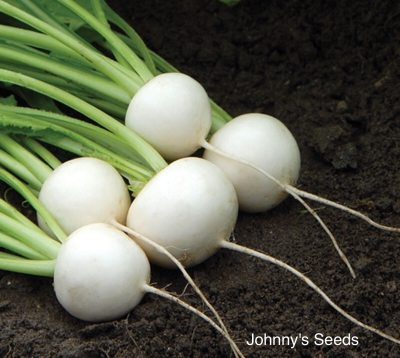
Onward
That’s not all that’s planned for the fall garden.
I popped some month-old lettuce transplants into the radish bed; the lettuce should be ready for harvest in about a month, just as the turnips and radishes begin to fill in the bed. I’ll also sow lettuce in seed flats, then prick them out into individual cells every couple of weeks until about the middle of September. These seedling can be plugged in quickly wherever space becomes available, even between slower growing plants. The lettuce can to be harvested and out of the way as these slower plants fill in their allotted space.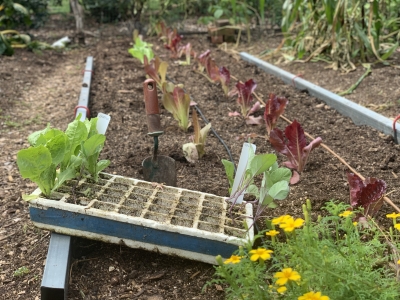
More beds for planting will become available as this past spring’s second and third corn plantings get harvested. Into those beds will go rows of mustard, arugula, and, perhaps, spinach. I often forgo spinach because the flavor is very similar to Swiss chard, a close relative, which grows right through hot and cold weather, and keeps pumping out new leaves, so very few plants are needed.
And then there’s one of my favorite fall — and winter — salad greens, mâche, also know by its British name, corn salad. British “corn” is any kind of grain, and corn salad is or was a common weed and salad green in British wheat fields. Corn salad is also a weed of my garden beds and paths. No problem. I’ll harvest it from where it stands and, for even larger heads, carefully lift clumps or individual plants and transplant them into a seed flat to grow for about a month before transplanting them into the ground.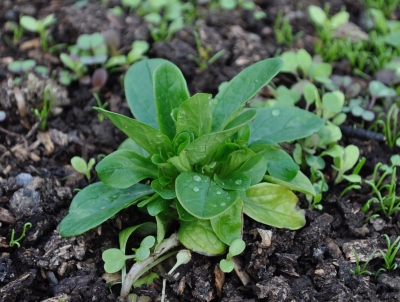
With autumn attended to, I can put myself back into summer, biking, swimming, and feasting on my favorite garden delicacies such as Golden Bantam corn, Sungold tomatoes, Shintokiwa cucumbers, and Sweet Italia and Picnic Orange peppers. All this thanks to my getting out of the moment in spring to plan for summer harvests.


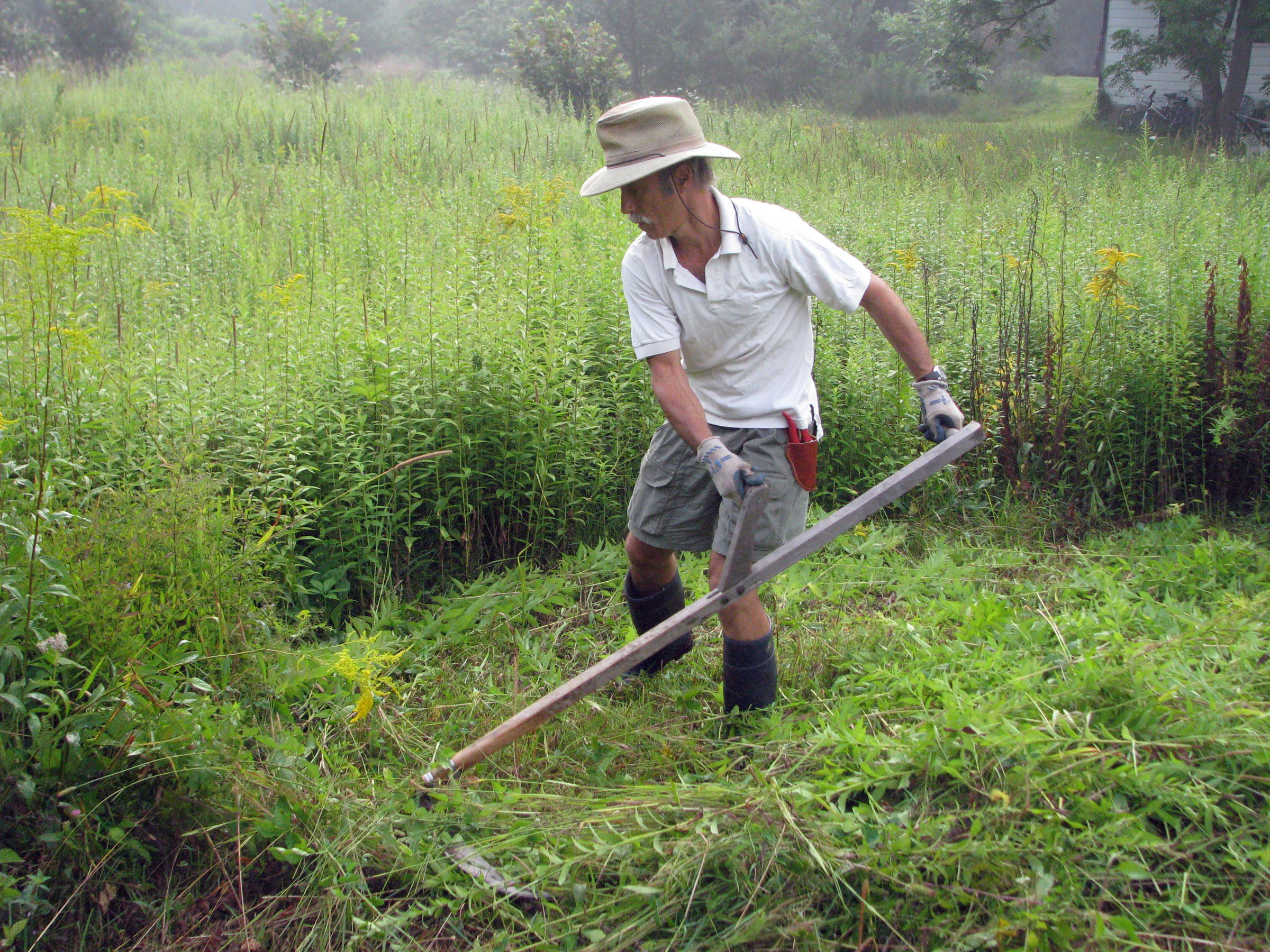
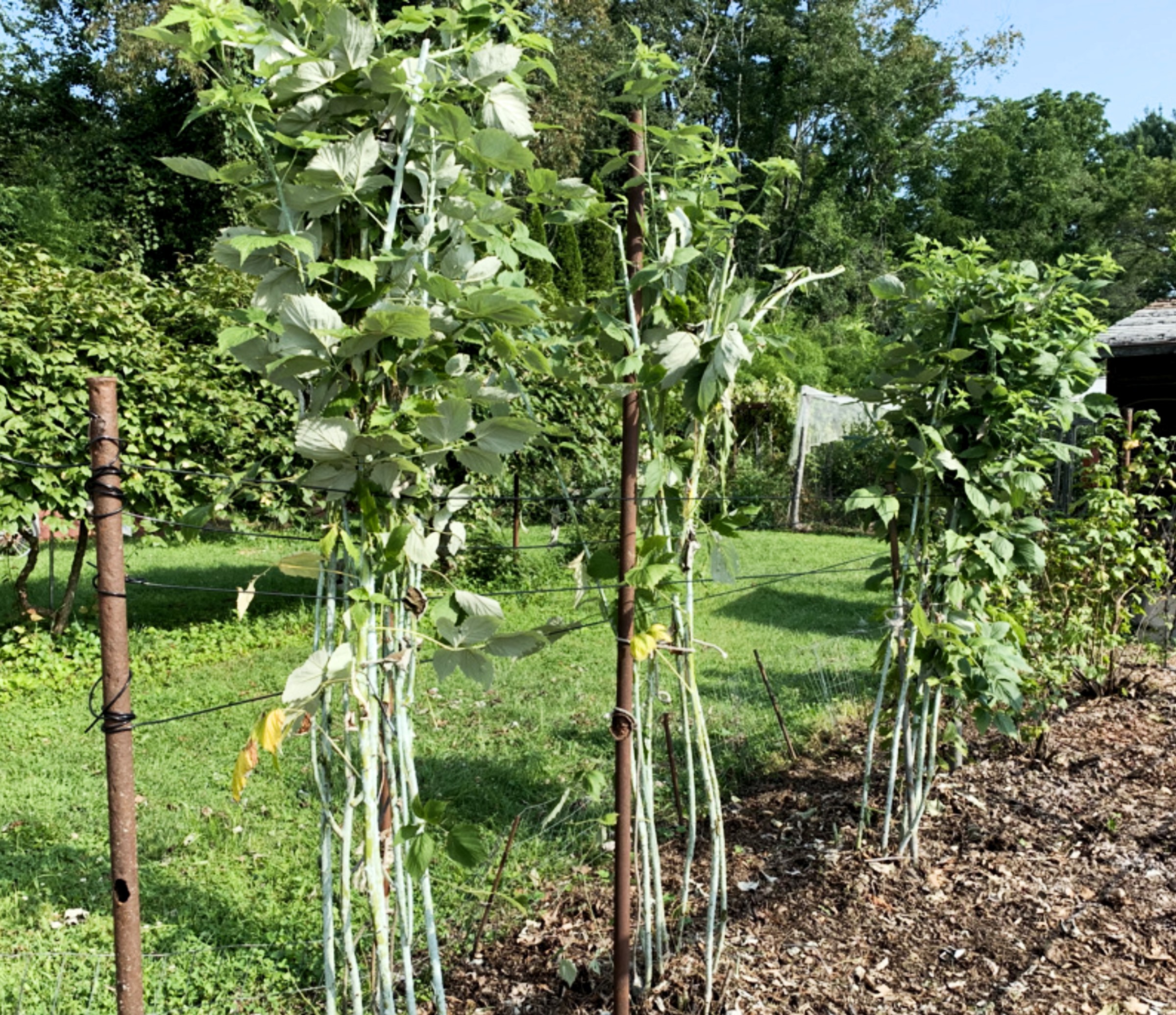
could you address the “days to maturity” meaning? I’ve tried searching the internet and got inconsistent and conflicting answers. Is it from time of planting seeds? time of transplanting? what if direct seeded? The seed packets are only sometimes explicit. Often it just says “days to maturity”. From When!!??
Thanks
“Days to maturity” is the number of days required from the time the transplant or seed is planted of sown outdoors in the garden.
How can the two of you eat all this stuff? I grow a few things and still have to give a lot away. I had 3 yellow squash plants produce 21 pieces this year. My friends and I managed to eat 4. BTW, thanks for recommending Sungold tomatoes – they are fantastic. Even better than Sweet 100’s in my opinion.
I don’t know. Somehow we manage.